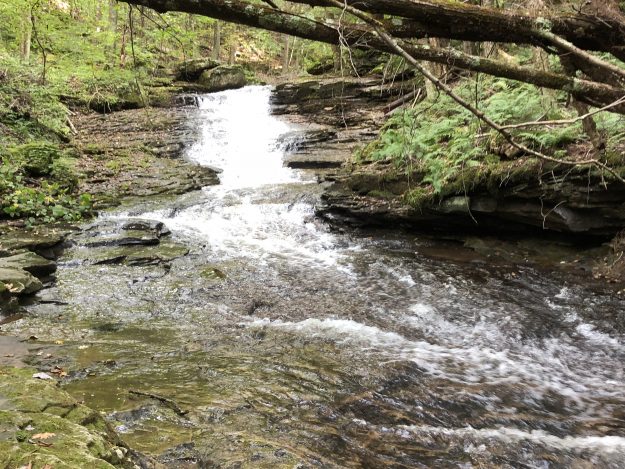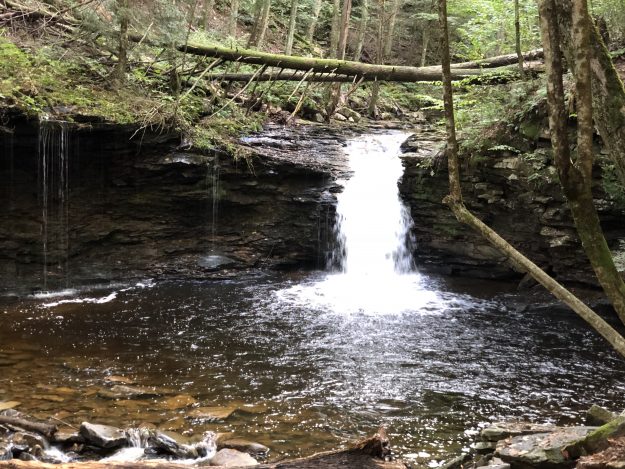
This past fall a few of us braved the weather and left for World’s End State Park even though it was pouring. It rained the entire way there but let up when we arrived. We even got luckier when the sun blessed us with its appearance after lunch.
We started the hike along the creek on Canyon Vista Trail. The trail shortly meandered up a very steep mountain, where we stopped for some nice shots of our surroundings.

Large Rocks Were Everywhere 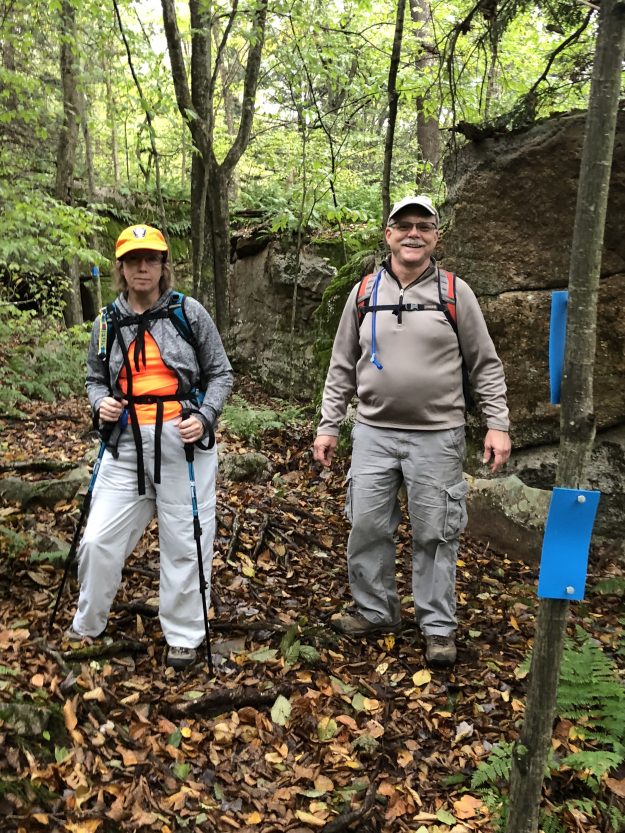
Taking A Short Break 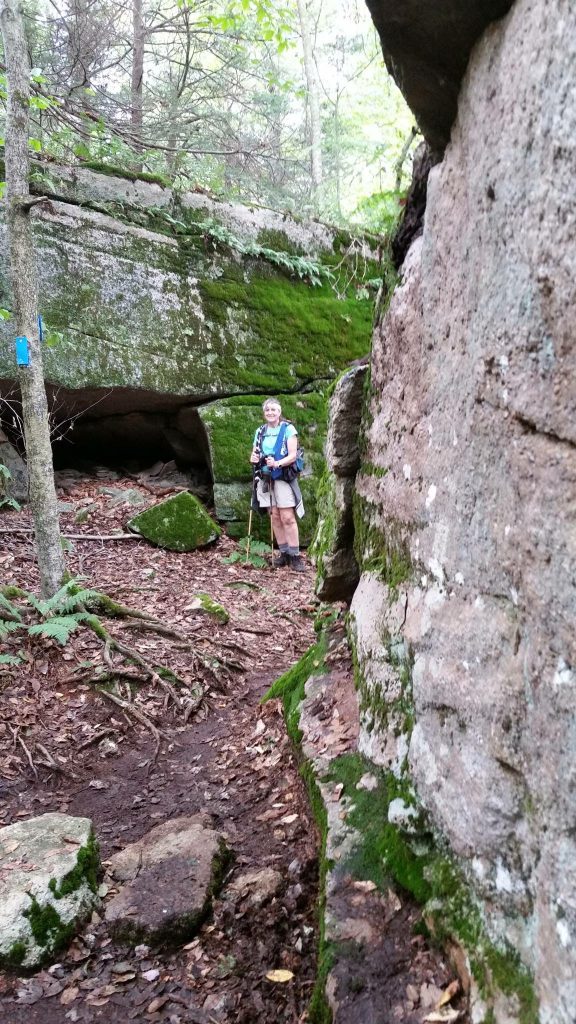
More Rocks 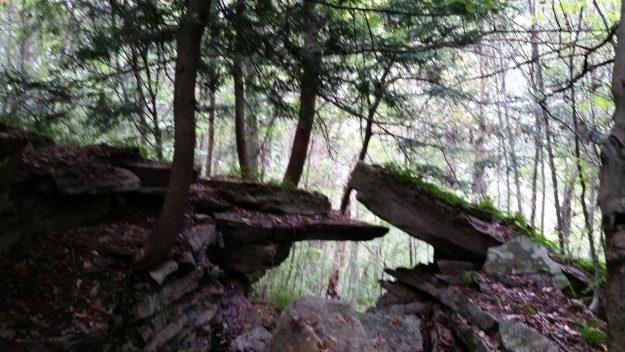
Trees Growing Out of Rocks 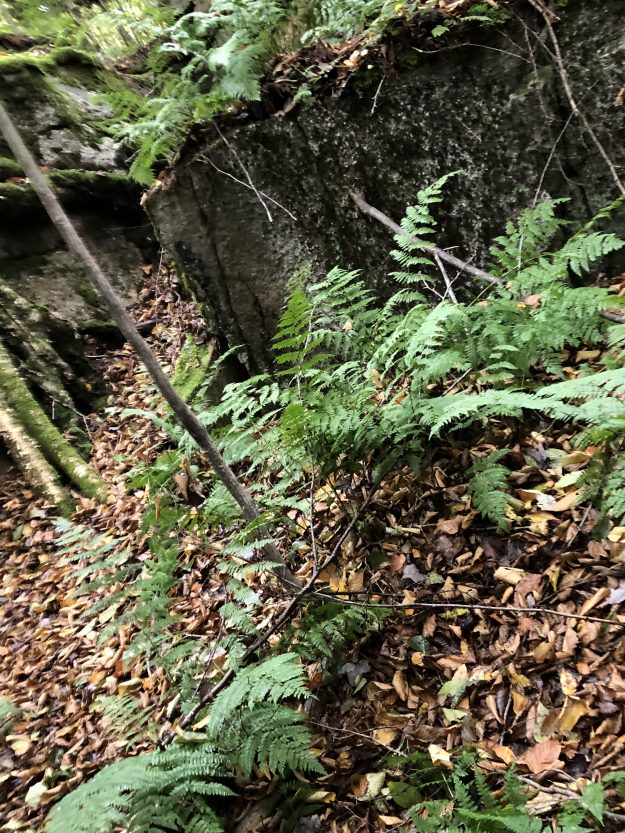
Green All Around Us
Once at the top we got a view of the canyon; taking a moment for more photo opportunities.

The Clouds Start To Part 
The Three Of Us Who Braved The Trip 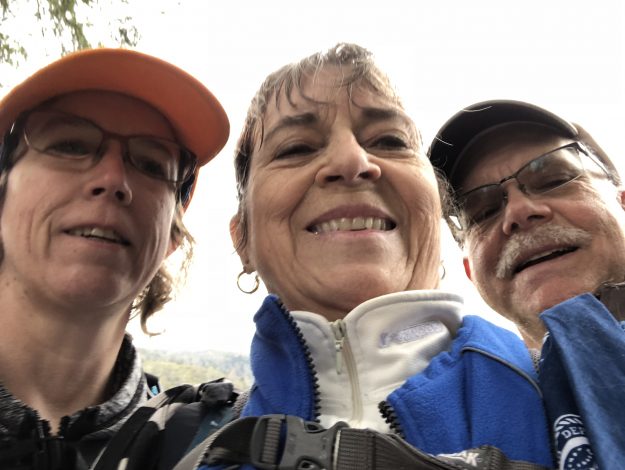
Time For A Close UP 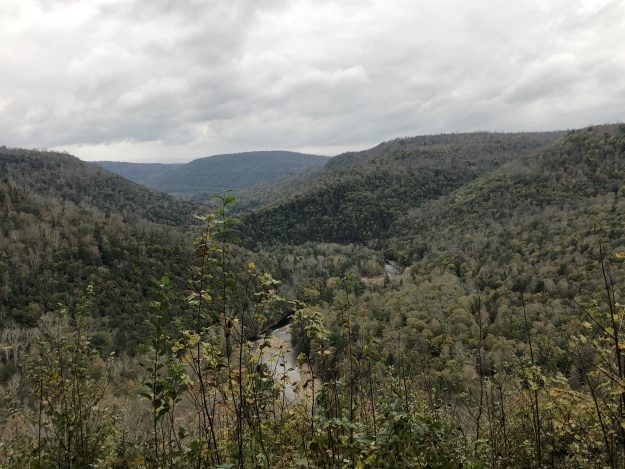
Vista View
After lunch at the top we started down the mountain until we hooked up with LInk Trail. From Link Trail we went on the Double Run Nature Trail, where we were graced with many beautiful waterfalls as we finished the loop,
After we left the falls we picked up the Loyalsock Tail which proved a rather strenuous, very rocky hike up hill. There were so many large rocks, the only way we could tell where the trail went was the marks on the trees. Fortunately, the up hill climb was not very long, before we picked up the Canyon Vista Trail again and returned to the start for a total of 7.5 miles.
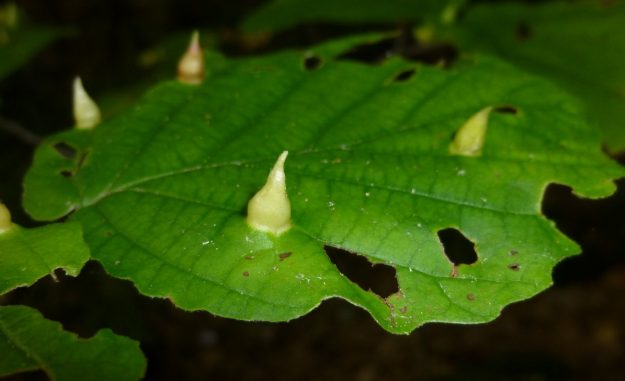
Our Theme for the event was Galls. Galls are weird bumps growing on stems, leaves, and buds of flowers that come in many sizes, colors and shapes. They usually form when a female fly, midge, wasp, or another female insect lays her egg on or in a plant. However, not all galls are started by insects. Some are started by mites, cousins of arachnids, tiny worms, called nematodes, or by fungi or bacteria.
Galls created by insects start to grow once the insect egg hatches and the young insect secretes a chemical on the plant which causes the plant to grow around the insect. This provides a place to live and food to eat. By the time the young insect eats its way to the outside of the gall it has turned into an adult. That is why many empty galls will have a small hole in them where the adult insect chewed its way out.
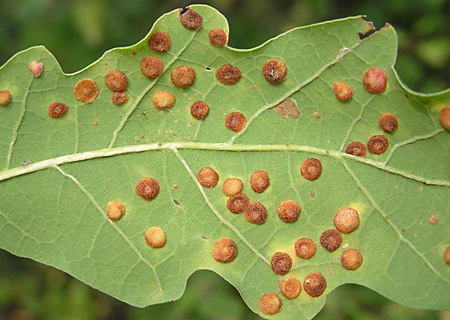
Oak Cynipid Gall 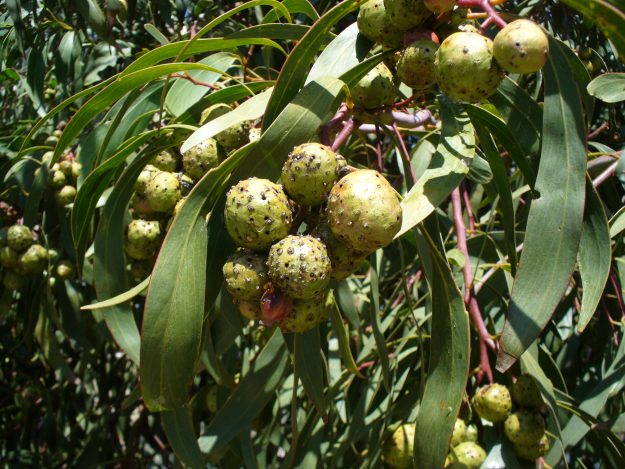
Galls On Acacia 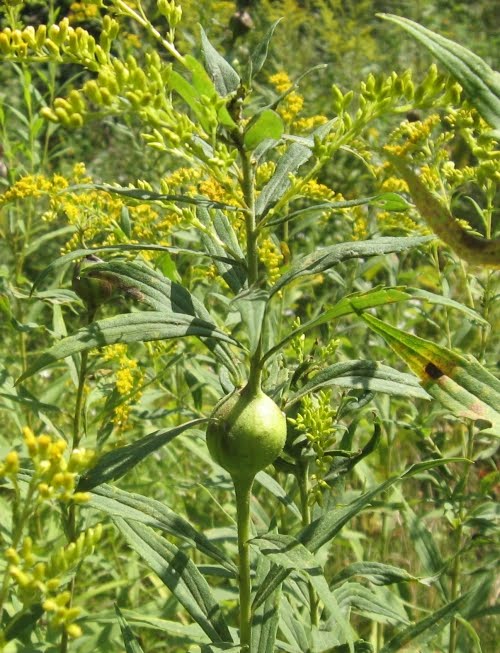
Goldenrod Gall
Galls not only serve as food for the host but are also eaten by birds and other animals like squirrels and mice. Sometimes another insect will eat the gall and also the host or original home owner! So even though many insects choose a certain kind of plant to lay their egg on, one should not assume the emerging insect is the original perpetrator.
When warm weather comes around and you get out and about, keep your eye out for those galls!

